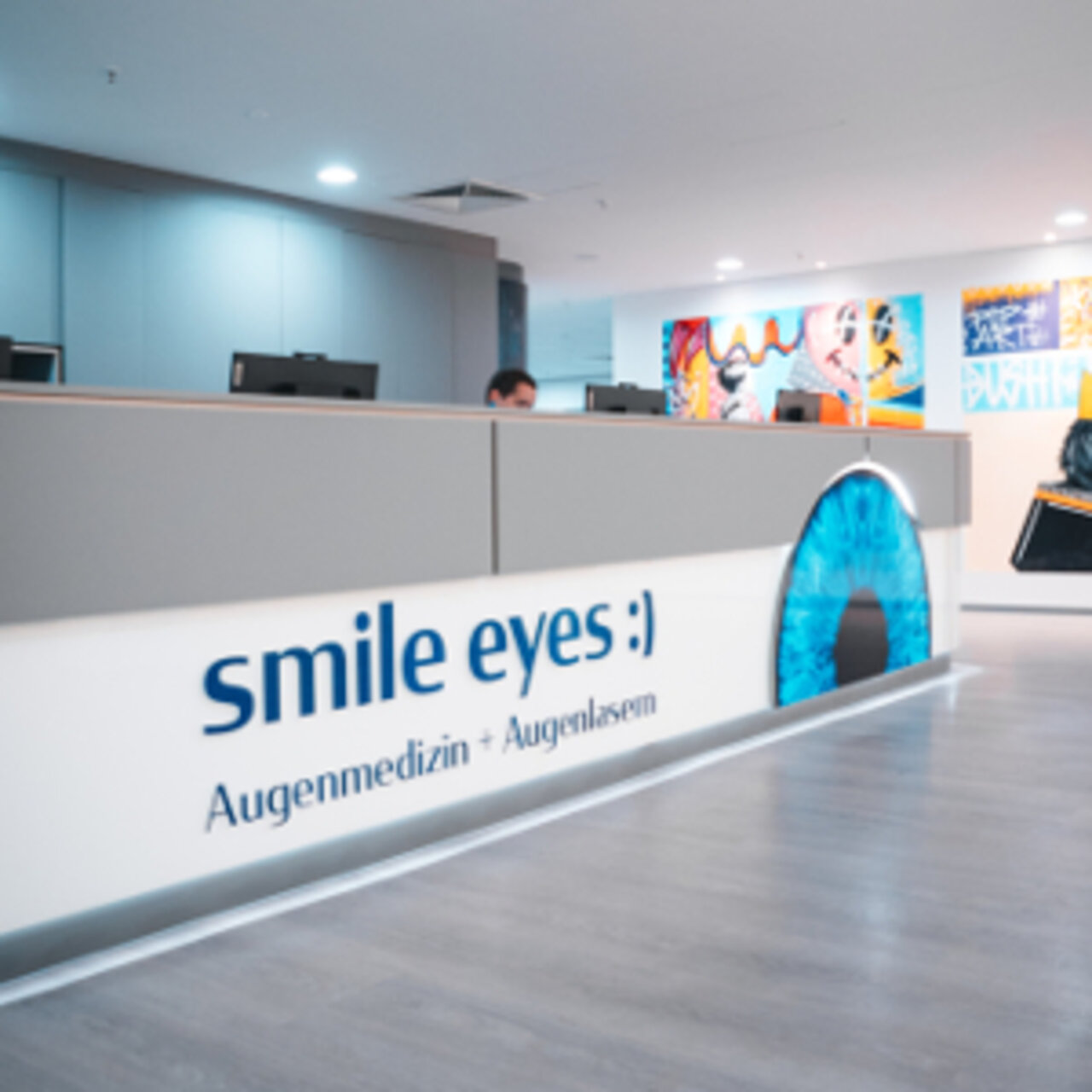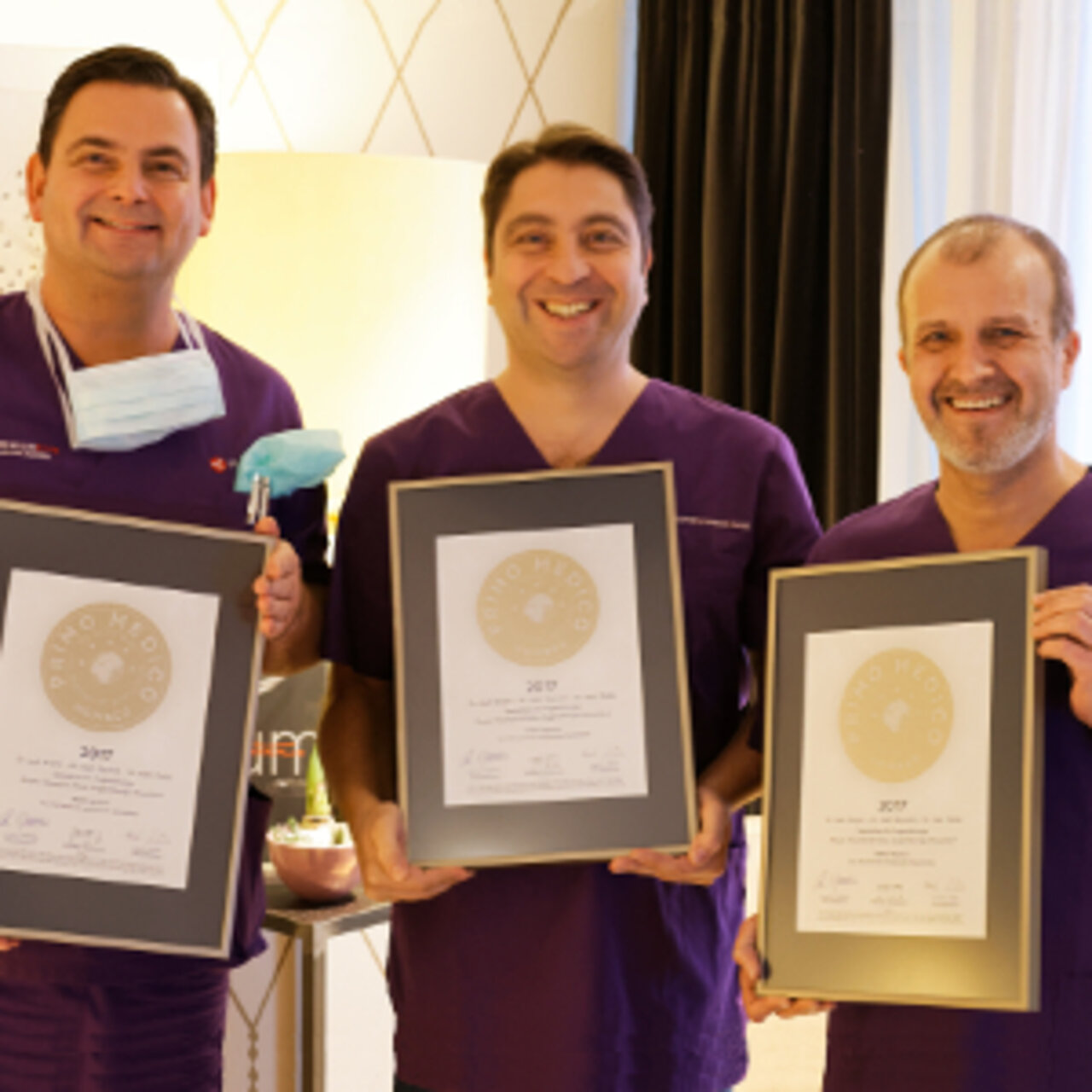Specialists in Hyperopia
7 Specialists found
Information About the Field of Hyperopia
What Is Farsightedness?
Farsightedness (hypermetropia or hyperopia) means that the affected person sees things blurred and hazy up close but can see things sharply in the distance. However, the eye muscles must constantly tense for sharp distance vision. Farsightedness is congenital. In children, mild farsightedness is common. This can improve as the eyeball grows. However, farsightedness is also one of the most common refractive errors in adults.
How Does Farsightedness Develop?
Incident rays are refracted by the lens and cornea and usually meet precisely on the retina. This is how a sharp image is formed. If parallel incident rays do not meet on the retina, a blurred image is formed. In farsightedness, the rays meet only behind the retina. In most cases, the eyeball of farsighted people is too short concerning the refractive power. This is called axial hypermetropia. However, it can also happen that the refractive power of the cornea and lens is too small. This form of farsightedness is called refractive hypermetropia.
Farsightedness Symptoms
A young person can compensate for farsightedness to a certain degree by accommodation (adjustment of the refractive power) of the lens. By tightening the ciliary muscle in the eye, the lens changes shape, and the refractive power is altered so that the refracted rays meet on the retina. The refractive power is measured in diopters.
For example, mild farsightedness exists at + 1 or + 2 diopters. Children can still compensate for farsightedness of + 4 diopters. However, this requires constant accommodation. Constant accommodation can cause inward strabismus in farsighted children. If farsightedness and inward strabismus are not corrected, this can lead to permanent visual impairment (amblyopia).
The farsightedness of +4 diopters or more can affect handwriting recognition in preschool children. More severe farsightedness cannot be compensated by accommodation, even by a young person. As a result, things in the near appear blurred. This causes problems, especially when reading or working on the computer.
If the affected person is older, the accommodation ability of the lens also decreases, and the farsightedness can be compensated increasingly poorly. In addition, the tension of the eye muscles necessary for constant accommodation can lead to headaches, eye pain, eye fatigue, and dizziness.
A typical complication of farsightedness in adults is the development of angle-closure glaucoma. Due to the shortening of the eye, the anterior chamber of the eye is also narrower, and the outflow of aqueous humor at the angle of the chamber is blocked. This results in increased intraocular pressure.
Farsightedness correction
Glasses
Farsightedness can be corrected with eyeglasses. Glasses for farsighted people have a convex lens, also called a plus lens, and work like a converging lens. The glass is thinner at the edges than in the center. The convex glass additionally refracts the incident light rays. Thus the point where the rays meet in the eye is shifted forward, as close as possible to the retina.
The ophthalmologist measures farsightedness by placing lenses of different strengths in front of the patient. However, children or young adults cannot relax their eyes properly even if given plus lenses with the appropriate diopter because the eye is constantly adjusted. Therefore, they would choose a lens with too low a diopter number. Therefore, before the examination, the ophthalmologist gives eye drops containing atropine or cyclopentolate, paralyzing the ciliary muscles to relax the eye muscles completely.
Only when the eye muscles are entirely relaxed can the actual severity of farsightedness be measured. Because children can often see well despite farsightedness due to the adaptability of the lens, there is a risk that farsightedness will not be detected. On the other hand, farsightedness that is not treated can lead to permanent visual impairment. Therefore, if farsightedness is suspected in children, an early visit to the ophthalmologist is significant.
Contact lenses
Contact lenses can compensate for farsightedness. Contact lenses, like eyeglass lenses, function as converging lenses. They adhere to the cornea and refract light in addition to the eye lens. There are form-stable contact lenses, which retain their shape outside the eye, and soft contact lenses, which are formable and must be kept in liquid.
Most often, patients want contact lenses for cosmetic reasons. However, contact lenses also have advantages: they do not narrow the field of vision and do not fog up. In addition, in the case of very severe farsightedness, contact lenses are often more comfortable for the person to wear than eyeglasses because the glasses are very thick in the case of severe ametropia.
But not everyone can tolerate wearing contact lenses all day. Contact lenses can irritate the eye like a foreign body. In addition, clumsy changing and incorrect cleaning can lead to cornea injuries, the introduction of bacteria, and infections.
Laser or Surgery for Farsightedness - Can Farsightedness Be Surgically Corrected?
Farsightedness can be corrected surgically. The methods involve changing the cornea's refractive power or compensating for the refractive error at the lens.
The Refractive Surgery Commission of the German Ophthalmological Society and the Professional Association of Ophthalmologists of Germany recommends two different eye laser methods for farsightedness up to +3 diopters: LASIK (laser in situ keratomileuses) and Femto-LASIK.
Laser Treatment of Farsightedness with LASIK or Femto-LASIK
In LASIK, a 0.1- to 0.15-millimeter-thick layer is partially separated from the cornea using a microkeratome, a sophisticated micro scalpel, and folded over. Using the Excimer laser, the surgeon ablates the inside of the cornea in a ring shape, preserving the corneal tissue in the center. This creates a more pronounced bulge. Then the surgeon puts the folded corneal layer back over it. The corneal layer grows on its own.
Femto-LASIK is a newer form of LASIK. Here, the microkeratome is replaced by the femtosecond laser. For more severe farsightedness up to +4 diopters, the methods are recommended on a limited basis.
PRK for Farsightedness
Surface treatments, e.g., PRK (photorefractive keratotomy) or LASEK, are also recommended on a limited basis for farsightedness up to +3 diopters. The Refractive Surgery Commission defines this borderline: the procedure can be used, but the results are progressively worse, and the side effects more frequent; comprehensive patient education is necessary.
Intraocular Lenses for Farsightedness
For farsightedness above +3 diopters, the use of an artificial lens (phakic intraocular lens - phakic IOL) is recommended. In this method, the surgeon opens the eye at the edge of the cornea and inserts an additional artificial lens into the eye. The artificial lens is similar to a contact lens. It may be attached to the iris in the anterior chamber of the eye or supported in the chamber angle, or it may be inserted behind the iris and sit on top of the crystalline lens. The incision is sutured or heals without sutures.
Limited recommendation of the method is for low farsightedness from +1 diopter. There is also a possibility to replace the natural eye lens with an artificial lens (RLA - refractive lens exchange). This procedure is used when there is presbyopia as well as hyperopia.
Laser or Surgery for Farsightedness - Recommended Age?
Laser treatment (LASIK, Femto-LASIK, surface treatment), implantation of an artificial lens, or lens exchange should only be performed after 18.
Laser Treatment or Surgery for Farsightedness - Possible Risks?
After LASIK or Femto-LASIK, the patient's vision deteriorates in the first few hours. During the first weeks, the ring-shaped pit in the cornea partially fills with corneal epithelium again. Farsightedness may worsen again as a result. In addition, patients often suffer temporarily from increased dry eyes. Twilight vision may also be impaired: Patients see light rings around illuminated sources (halos) and shadow images.
Very rarely, patients experience corneal incision defects, detachment of the top layer (epithelium) of the cornea, wrinkling of the anterior corneal lamella during wound healing, weakening, and protrusion of the cornea, inflammation, infection, or severe scarring.
In surface treatments, patients have a poorer vision and moderate discomfort, rarely severe pain, during the initial period after surgery. In addition, scars may form on the cornea. As with LASIK and Femto-LASIK, patients may experience decreased surgical success, dry eyes, and worsening of twilight vision during the first few weeks. Generally, with all three methods, complications are more likely when significant corrections are needed.
For LASIK or Femto-LASIK, the entire cornea, as well as the cornea under the incision, must be sufficiently thick! In addition, LASIK, Femto-LASIK, or surface treatment must not be carried out in cases of chronic progressive corneal disease, cataract, glaucoma with severe visual field limitation, exudative macular degeneration, and a form of corneal protrusion.
When an artificial lens (phakic IOL) is used, the following complications rarely occur seizure-like increase in intraocular pressure, iris damage, change in the shape of the pupil, deterioration, and clouding of the cornea, clouding of the crystalline lens, chronic inflammation, and displacement of the artificial lens. In individual cases, the retina may detach, and the patient may go blind. The artificial lens must not be used if the patient suffers from glaucoma with severe visual field limitation or if the inner corneal layer is severely damaged.
Which Doctors and Clinics Are Specialized in Surgery for Farsightedness?
An eye exam and prescription for glasses or contact lenses are part of the daily routine of most eye doctors. For an eye examination in children, an ophthalmologist who specializes in children should be chosen. If surgical correction of farsightedness is required, doctors and clinics are specializing in refractive surgery for this purpose.
The modern procedures of refractive surgery now have a high level of quality. The specialized ophthalmologist examines the eye comprehensively, educates the patient, and recommends a suitable method depending on the degree of farsightedness.
We will help you find an expert for your condition. All listed doctors and clinics have been checked by us for their outstanding specialization in the field of farsightedness and are awaiting your inquiry or request for treatment.
Sources:
- Grehn, F. (2012). Augenheilkunde. 31. überarbeitete Auflage, Springer Verlag
- Kommission Refraktive Chirurgie der Deutschen Ophtalmologischen Gesellschaft und des Berufsverbands der Augenärzte Deutschlands e.V. (2019). Bewertung und Qualitätssicherung refraktiv-chirurgischer Eingriffe durch die DOG und den BVA – KRC- Empfehlungen. Link:https://www.aad.to/krc/qualit.pdf (27.10.2020)
- Berufsverband der Augenärzte Deutschlands e.V. Weitsichtigkeit (Hyperopie). Link:https://augeninfo.de/hauptmenu/augenheilkunde/fehlsichtigkeit/weitsichtigkeit-hyperopie.html(27.10.2020)
- VIP-HIP Study Group: Kulp, M.T. et al. (2016). Uncorrected Hyperopia and Preschool Early Literacy Results of the Vision in Preschoolers – Hyperopia in Preschoolers (VIP-HIP) Study. Ophtalmology, April, S. 681-689






